Asking questions about where we come from is one of the traits that marks us out as distinctly human. Yet this inquisitive streak hasn’t always led us in the right direction, particularly when we think we are more important than we ultimately are.
The story of our quest to discover how our Solar System formed is littered with false starts, and one that astronomers are still refining.
The world’s greatest thinkers originally had the Earth at the centre of creation, with the Sun, Moon, planets and stars circling around us. It’s an idea that lasted for more than 1,000 years, dating back to the days of Aristotle and Ancient Greece.
It wasn’t until the Polish astronomer and mathematician Nicolaus Copernicus challenged this idea in the 16th Century that the tide of opinion started to shift. He said that the planets – including Earth – orbit around the central Sun.
Copernicus' key discovery
It is hard to see how astronomers could have formed their current picture of how our Solar System came to be if we still thought everything orbited the Earth. Copernicus’s breakthrough is rightly lauded as one of the greatest scientific revolutions in history.
And yet it wasn’t inspired by astronomical observation, but by mathematical elegance.
The ancient idea of geocentrism – that everything in the Universe orbited the Earth in perfect circles – ran into a problem when observing the night sky. Some of the planets appeared to double back on themselves – hardly the behaviour of worlds circling the Earth. So the Ancient Greek polymath Ptolemy introduced ‘epicycles’ which saw the planets move in smaller circles, which in turn orbited around the Earth.
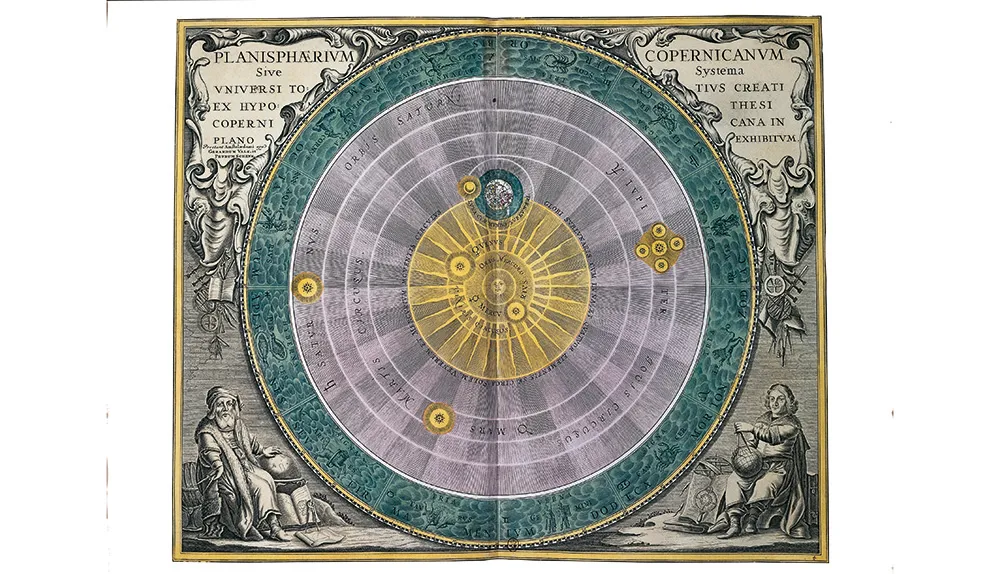
But this was a big leap, introduced to force our need to have the Earth at the centre to fit with what we saw in the night sky. Copernicus’s genius was to realise that switching to having the Sun in the centre would do away with the need for epicycles. Under his heliocentric model, Mars appears to double back on itself because the Earth overtakes it in its orbit around the Sun.
Copernicus was so fearful of the inevitable backlash from religious quarters that he delayed publication of his work until after his death. Legend has it that he only saw a copy of his seminal work on his deathbed.

Galileo's observations
It would take many decades for experimental evidence to confirm that we do indeed live in a ‘solar system’. It was mostly the work of the Italian astronomer Galileo Galilei in the early 1600s that cemented the idea.
It wasn’t all plain sailing, of course. Galileo famously had his own run-ins with the Church, and he was only officially pardoned in 1992. But as far as the science was concerned, the clincher came when he observed the planet Venus waxing and waning through phases, much like the Moon.
This isn’t possible if both Venus and the Sun orbit around the Earth – only if both planets circle a central source of illumination. So we took our place as just another one of the Sun’s family of planets.
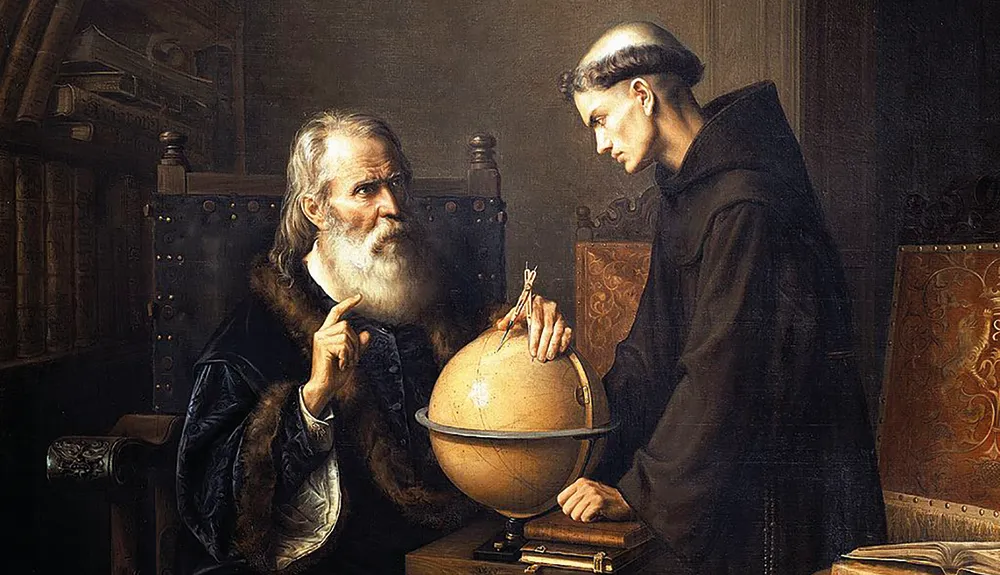
Attention then naturally turned to how such a system could come about. In the 1630s, the French philosopher René Descartes was one of the first to speculate. His starting point was the idea that nothing in nature could ever be empty.
So if a particle in space moved position, another must move in to fill the gap, creating a series of ‘vortices’.
Descartes believed that the planets were formed when material caught up in these swirling circles somehow condensed. It would take Sir Isaac Newton and his famous work on gravity to establish why the planets orbit the Sun. But that still didn’t explain where the Sun and its planets came from.
Competing theories on the origin of the Solar System
By the mid-1700s, French mathematician Georges-Louis Leclerc was suggesting that the planets formed when a comet struck the Sun, sending vast amounts of material surging outwards. Over time, he said, gravity collected this material together to form orbiting worlds.
By the end of the century, Leclerc’s compatriot Pierre-Simon Laplace had shown this to be impossible – any ejected material would have been pulled back in by the Sun’s gravity.
Read more about the origin of the Solar System:
- Comet interceptor: Unlocking the secrets of the early Solar System
- Solar System facts: five things everyone should know about our cosmic neighbourhood
- Hubble's greatest discoveries: Protoplanetary discs
Laplace himself then started to formulate an alternative picture. The invention of the telescope had allowed astronomers to discover a series of fuzzy blobs scattered around the night sky.
They called them ‘nebulae’, which is the Latin for ‘clouds’. Laplace suggested that the Sun had formed from such a cloud. As the cloud collapsed under gravity it spun faster and faster, much like an ice skater drawing in their arms.
According to Laplace, material would have been thrown off the Sun as its rotation quickened, creating a flat disc surrounding the star. The planets were then formed when gravity gathered this material together.
Yet by the turn of the 20th Century, Laplace’s idea had all but been abandoned. The main problem was that if this picture was correct, the Sun should be spinning a lot more rapidly than it is, and the planets should be revolving at a more sedate pace.
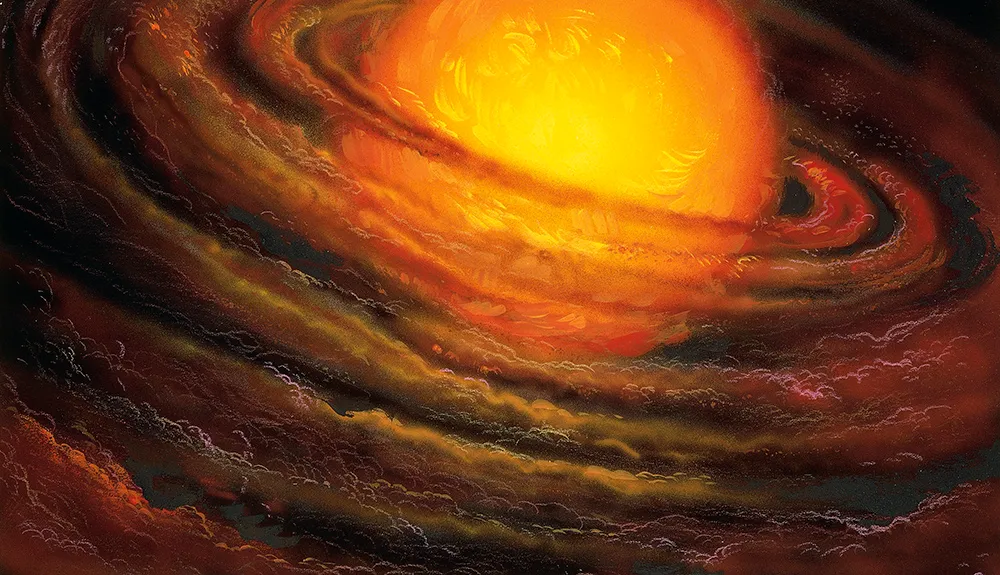
Unable to reconcile this issue, astronomers such as Sir James Jeans turned to an alternative explanation.
In 1917, Jeans proposed that another star was involved in the Solar System’s formation. As this intruding star buzzed past the Sun, its strong gravity would have torn off a significant amount of stellar material. That, said Jeans, provided the building blocks necessary to form the planets.
But his idea didn’t last long. By 1929, it had been shown that such a close encounter was extremely unlikely due to the vastness of space. What’s more, even if it did occur, the Sun would have reabsorbed much of the lost material. With no clear frontrunner, new theories continued to emerge as the decades rolled on.
In the 1940s, British astronomer Fred Hoyle proposed that the Sun once had a much larger companion star which had exploded as a supernova. Some of the resulting shrapnel was snared by the Sun’s gravity, later coming together to form the planets. But that didn’t hold water either, partly because it struggled to explain the low masses of Mercury and Mars.
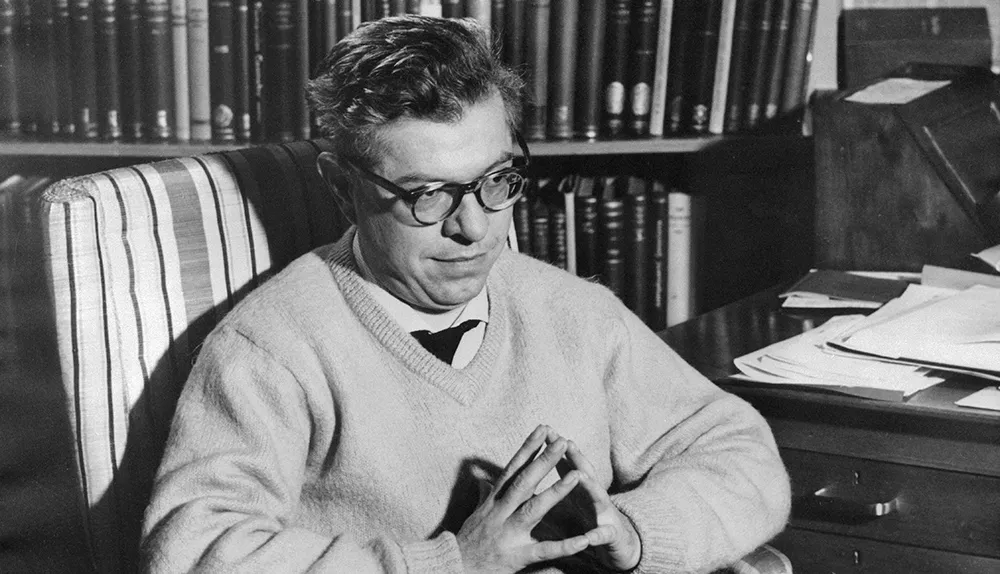
It wasn’t until the 1970s that things started to make more sense, when astronomers returned to Laplace’s nebula theory. The main problem with this theory – that the observed rotation of the Sun was slower than expected – could be eliminated if drag caused by dust grains in the surrounding cloud had helped put the brakes on.
This idea was then buoyed significantly in the early 1980s when astronomers spotted dusty, flat discs of material located around young stars, called protoplanetary discs or ‘proplyds’. This effectively caught planet formation in the act elsewhere in space.
Alien solar systems
Observing other solar systems is now key to understanding how ours formed. But up until the mid-1990s no one had ever spotted a planet orbiting another star like the Sun. That changed in 1995 with the discovery of a world encircling the star 51 Pegasi.
In the last two decades, astronomers have uncovered more than 3,000 planets in other solar systems – the so-called ‘exoplanets’. But right from the get-go it was clear that these alien neighbourhoods weren’t all perfect mirror images of our own.
For example, 51 Pegasi’s planet, which has since been named Dimidium, takes just over four days to orbit 51 Pegasi. It is nearly eight times closer to its star than Mercury is to the Sun.
What’s more, Dimidium is around half the mass of Jupiter, making it a much bigger planet than Mercury.
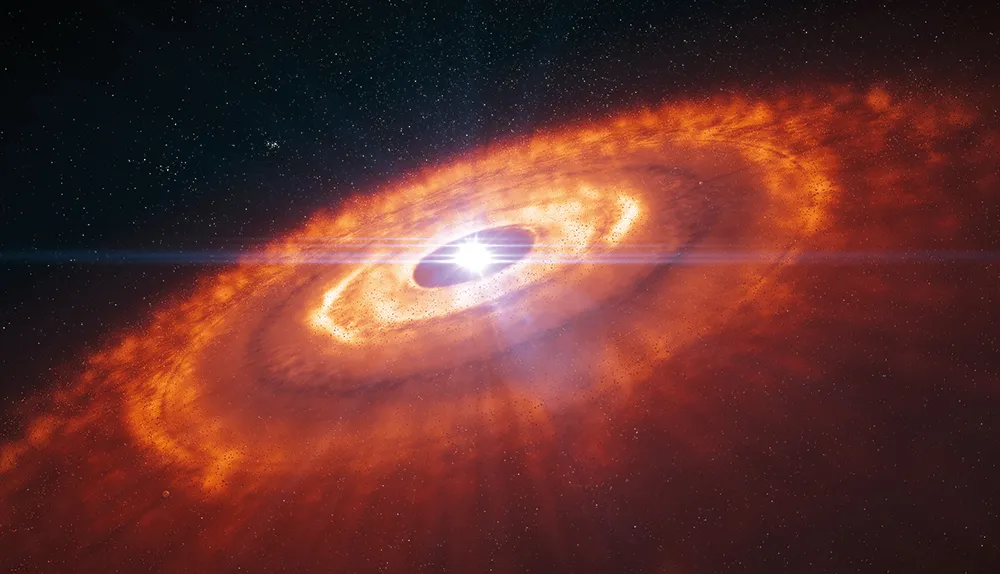
Under the simple picture of planets forming from the debris of a newborn star, it is incredibly difficult to get such a giant world forming in such close proximity to its host. A more viable explanation is that the planet formed much further away from the star and then migrated inwards over time. Here was compelling evidence that planetary orbits were not fixed, but could wander significantly. Bolstered by these discoveries, astronomers started to look at our own Solar System with fresh eyes.
In 2005, a decade after the discovery of Dimidium, a group of astronomers proposed the Nice model (named after the city in France where it was first formulated). The crux of this idea is that the giant planets of our Solar System – Jupiter, Saturn, Uranus and Neptune – started off much closer together.
Over time, Jupiter moved inwards towards the Sun as the other three planets moved outwards. In some scenarios, Uranus and Neptune even swap order.
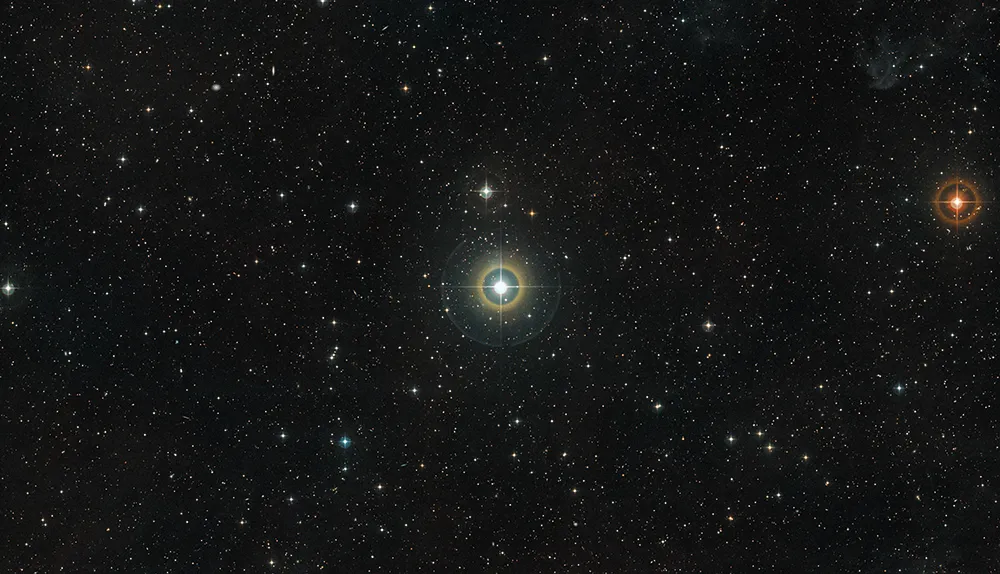
The movement of Jupiter towards the Sun would have scattered many smaller bodies, much like a dog running through a crowd of pigeons. Many of these runaways would have ended up in the inner Solar System, creating a sharp peak in the number of meteors raining down on the rocky planets and their moons. And there is indeed evidence of a surge in impact activity on the Moon between 3.8 and 4.1 billion years ago (any evidence of impacts on the Earth would have eroded away long ago).
The outward movement of Neptune would also have sent smaller bodies running further from the Sun, helping to explain the Kuiper Belt and Scattered Disc – two reservoirs of smaller objects in the outer reaches of the Solar System.
Nibiru, the planet hiding in our Solar System
However, while it was a major step forward, this original Nice model was far from perfect. When using a computer simulation to recreate the gravitational interactions between the four giant planets, astronomers only ended up with a Solar System that looked like ours around 3 per cent of the time.
But with one small modification they could boost this to 23 per cent. The modification? The addition of a fifth giant planet. Yet we’ve only ever seen four giant worlds. So if we’re to take this explanation seriously we need to be able to say what happened to this other planet.
It could well have been ejected from the Solar System entirely during the migration of its neighbours – an orphan planet left to wander the black void of space. Astronomers have already found some examples of these so-called ‘rogue planets’, so the idea is far from ludicrous.
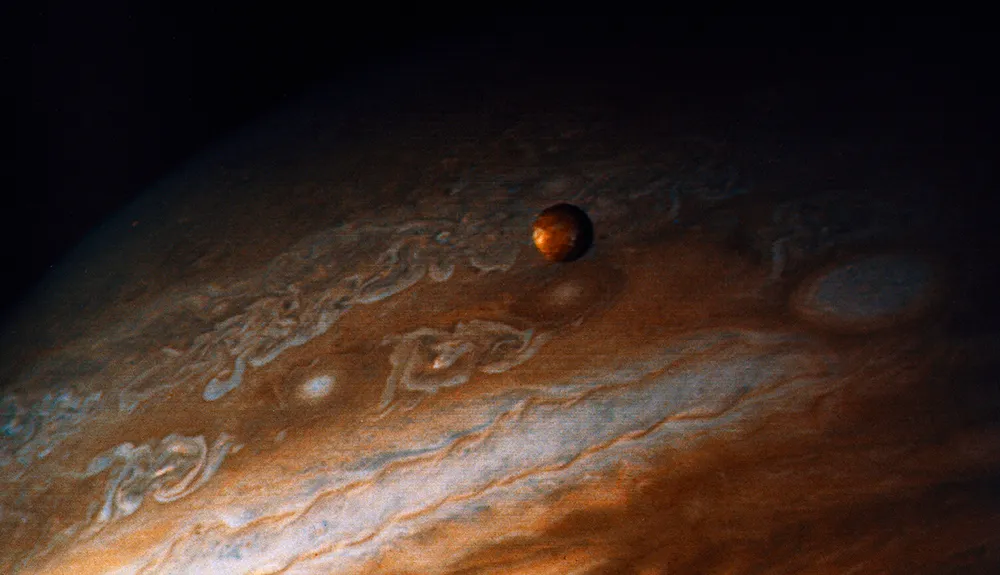
But there is an alternative, more tantalising explanation: this fifth giant planet is still right here in our own Solar System, waiting for us to find it. The buzz around this possible world, dubbed either ‘Planet Nine’ or Nibiru, has been one of the most exciting astronomical developments of recent years.
Back in 2014, a team of astronomers noticed that several small objects orbiting the Sun out beyond Neptune had very similar orbits. Then in January 2016 it was announced that more objects had been found behaving in the same way. The likelihood of such shared characteristics being down to chance has been calculated at just 0.007 per cent.
The leading explanation is that there is an extra planet, at least 10 times more massive than the Earth, skulking in the dark and lining the small objects up by tugging on them with its gravity.
If Planet Nine does indeed exist, the reason it has escaped our notice so far is its sheer distance from the Sun. Its orbit carries it an estimated 1,200 times further from the Sun than the Earth, meaning it’s likely to appear at least 600 times fainter than the dwarf planet Pluto.
Unless you knew exactly where to look, it would be easily missed. A dedicated search is now underway to hunt it down.
These latest astronomical adventures show us that the story of our Solar System’s formation is still very much a work in progress. We may have come a long way since the days of Ancient Greece, but there are still many chapters left to write.
- This article first appeared in issue 302 of BBC Focus Magazine - find out how to subscribe here
Glossary
Exoplanet - Any planet which orbits a star other than our Sun. The first exoplanet orbiting a Sun-like star was found in 1995.
Migration - The idea that the orbits of planets in a solar system can shift considerably over time. It is thought that Jupiter migrated inwards in our Solar System.
Nebula - A large cloud of gas and dust in interstellar space. Some nebulae can be thought of as star factories. Over many millions of years, gravity slowly collapses the cloud until the temperature and pressure is sufficient to ignite a new group of stars.
Proplyd - An abbreviation of ‘protoplanetary disc’. These are dark, flat rings around newly forming stars that astronomers believe will end up as planets.
Vortex - A whirling mass of fluid or air, especially a whirlpool or whirlwind. Descartes believed a similar mechanism was responsible for why the planets orbit the Sun.
The origin of the Solar System: a timeline of discoveries
Nicolaus Copernicus (1473-1543) – Born in Poland, Copernicus worked in many areas of intellectual thought from economics and politics to medicine, but is most noted for his work on the orbits of the planets.
1543 – Copernicus publishes De Revolutionibus Orbium Coelestium (On The Revolutions Of The Heavenly Spheres) setting out his ideas of heliocentrism. It is one of the most important books ever written. Copernicus only sees the published text on his deathbed.

Galileo Galilei (1564-1642) – The grandfather of modern astronomy, Galileo was the first person to point the telescope towards the night sky in a meaningful way, revolutionising our ideas about our place in space.
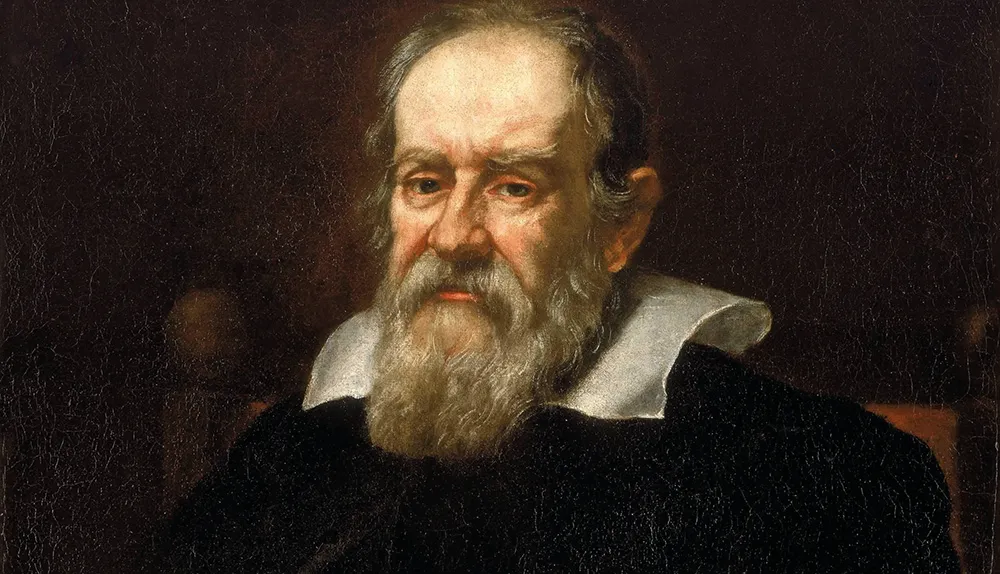
Pierre-Simon Laplace (1749-1827) – Not content with valuable work on star formation, this influential French scientist was one of the first to imagine the concept of black holes – a star with strong enough gravity to prevent anything escaping.
1796 – Laplace proposes his nebula model for the formation of the Solar System, which astronomers would return to over 150 years later.
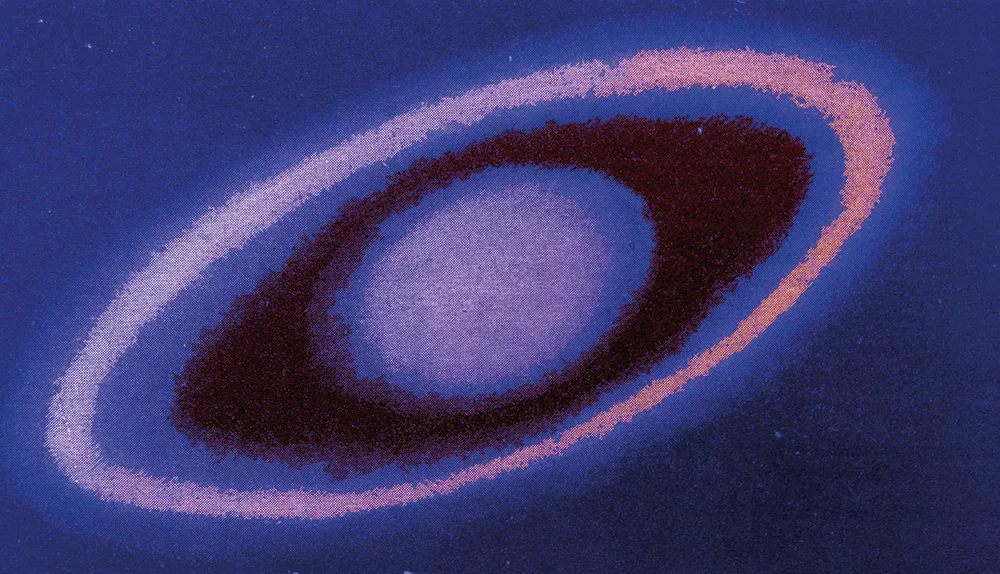
Sir James Jeans (1877-1946) – British astronomer James Jeans gave his name to the ‘Jeans mass’. If a nebula reaches this critical point it will undergo irreversible gravitational contraction and trigger star formation.
1995 – Astronomers discover the first planet orbiting another star like our Sun, ushering in the era of exoplanet astronomy which has seen over 3,000 new worlds discovered.
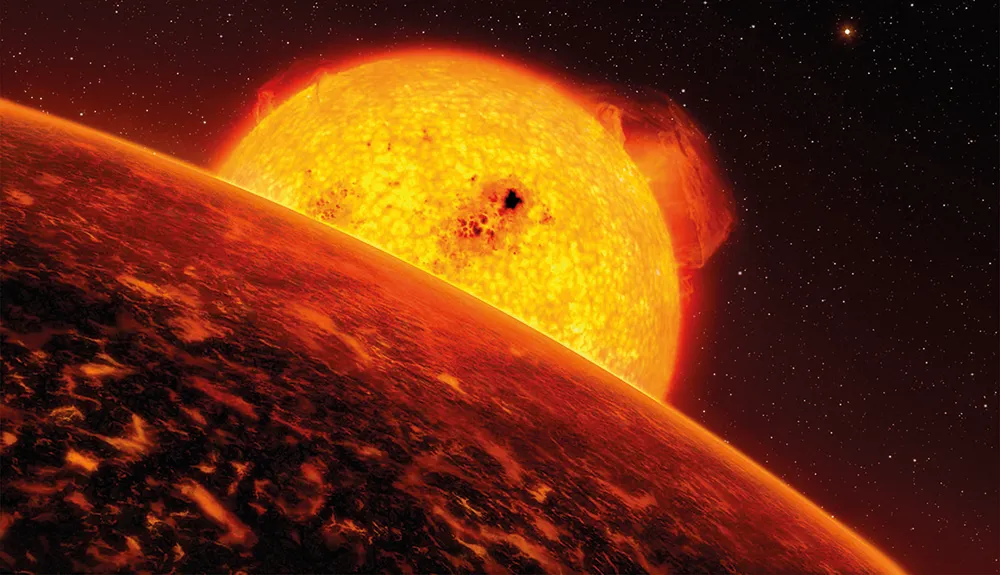
2005 – The first incarnation of the Nice model is published, the most comprehensive picture to date of how our Solar System came to be. It utilises the idea of planetary migration.
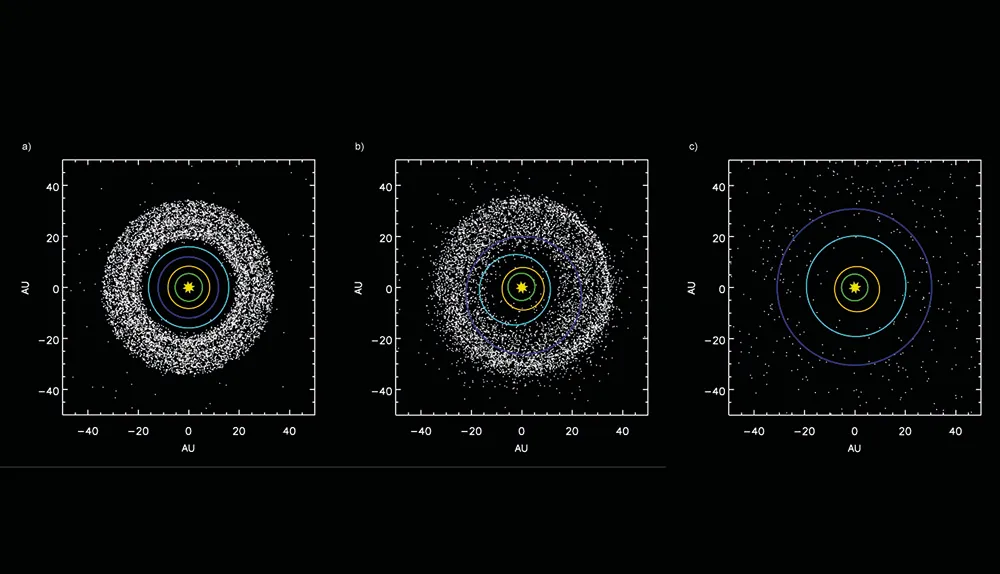
Mike Brown (1965-) – As the self-styled ‘Pluto Killer’, Brown has been one of the most prolific discoverers of objects located beyond the orbit of Neptune. He is instrumental in the current search for Planet Nine.
2014 – The first signs begin to emerge that there may be a ninth planet in our Solar System.
Small, distant objects are discovered to have very similar objects – something unlikely to be down to chance.

